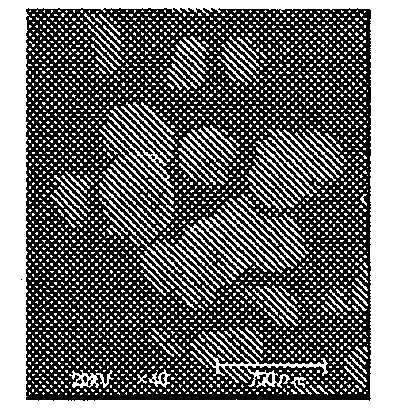Method for producing coenzyme q10 particle
a coenzyme q10 and particle technology, applied in the direction of drug compositions, antinoxious agents, metabolic disorders, etc., can solve the problems of difficult brushing off the entire amount of powder, marked poor powder flowability characteristics, and difficult handling, so as to achieve uniform particle size, easy brushing off, and easy mixing with other substances
- Summary
- Abstract
- Description
- Claims
- Application Information
AI Technical Summary
Benefits of technology
Problems solved by technology
Method used
Image
Examples
example 1
[0118]In a separable flask (inner volume 1000 mL) with a stirrer was charged 30 g of oxidized coenzyme Q10 (bulk powder). Thereto was added 50 v / v % aqueous ethanol solution (600 mL) previously heated to 55° C., and the mixture was stirred at 400 rpm (required power for stirring per unit volume 0.34 kW / m3) using a disc turbine blade (diameter 50 mm) while maintaining at 55° C. until oxidized coenzyme Q10 was sufficiently melted and dispersed in the form of oil droplets. Thereafter, the dispersion was cooled to 35° C. at a cooling rate of 0.2° C. / min under the same stirring conditions, and subjected to suction filtration and vacuum drying to give oxidized coenzyme Q10 particles. The obtained particles had an oxidized coenzyme Q10 content of 99.3 wt %. The obtained oxidized coenzyme Q10 particles were observed under a microscope (digital microscope VH-6200, manufactured by KEYENCE, hereinafter the same) and found to be granular particles with a mean particle size of about 510 μm. In a...
example 2
[0119]Using the same method and the same conditions as in Example 1 except that 30 v / v % aqueous ethanol solution containing 1 wt % gum arabic (600 mL) was used instead of 50 v / v % aqueous ethanol solution (600 mL), oxidized coenzyme Q10 particles were obtained. The obtained particles had an oxidized coenzyme Q10 content of 99.6 wt %. The obtained oxidized coenzyme Q10 particles were observed under a microscope and found to be granular particles with a mean particle size of about 120 μm. In addition, the obtained oxidized coenzyme Q10 particles were observed under SEM. As a result, a spherical particle shape having a smooth surface structure as shown in FIG. 2 was observed. The sphericity of the obtained oxidized coenzyme Q10 particles was analyzed from the particle photograph taken by SEM and found to be 0.93. Furthermore, the obtained coenzyme Q10 particles were evaluated by a powder tester for the powder flowability characteristics. As a result, the angle of repose was 32.9°, Dr....
example 3
[0120]Using the same method and the same conditions as in Example 1 except that reduced coenzyme Q10 (bulk powder, 30 g) and 40 v / v % aqueous ethanol solution (600 mL) were used and all operations were performed under a nitrogen atmosphere, reduced coenzyme Q10 particles were obtained. The obtained particles had a reduced coenzyme Q10 content of 99.4 wt %. The obtained reduced coenzyme Q10 particles were observed under a microscope and found to be granular particles with a mean particle size of about 600 μm. In addition, the obtained reduced coenzyme Q10 particles were evaluated by a powder tester for the powder flowability characteristics. As a result, the angle of repose was 33.9°, Dr. CARR's Flowability Index was 91.0 from other flowability characteristics, and the level of flowability characteristics was “Excellent”.
PUM
| Property | Measurement | Unit |
|---|---|---|
| angle of repose | aaaaa | aaaaa |
| sphericity | aaaaa | aaaaa |
| mean particle size | aaaaa | aaaaa |
Abstract
Description
Claims
Application Information
 Login to View More
Login to View More - R&D
- Intellectual Property
- Life Sciences
- Materials
- Tech Scout
- Unparalleled Data Quality
- Higher Quality Content
- 60% Fewer Hallucinations
Browse by: Latest US Patents, China's latest patents, Technical Efficacy Thesaurus, Application Domain, Technology Topic, Popular Technical Reports.
© 2025 PatSnap. All rights reserved.Legal|Privacy policy|Modern Slavery Act Transparency Statement|Sitemap|About US| Contact US: help@patsnap.com


